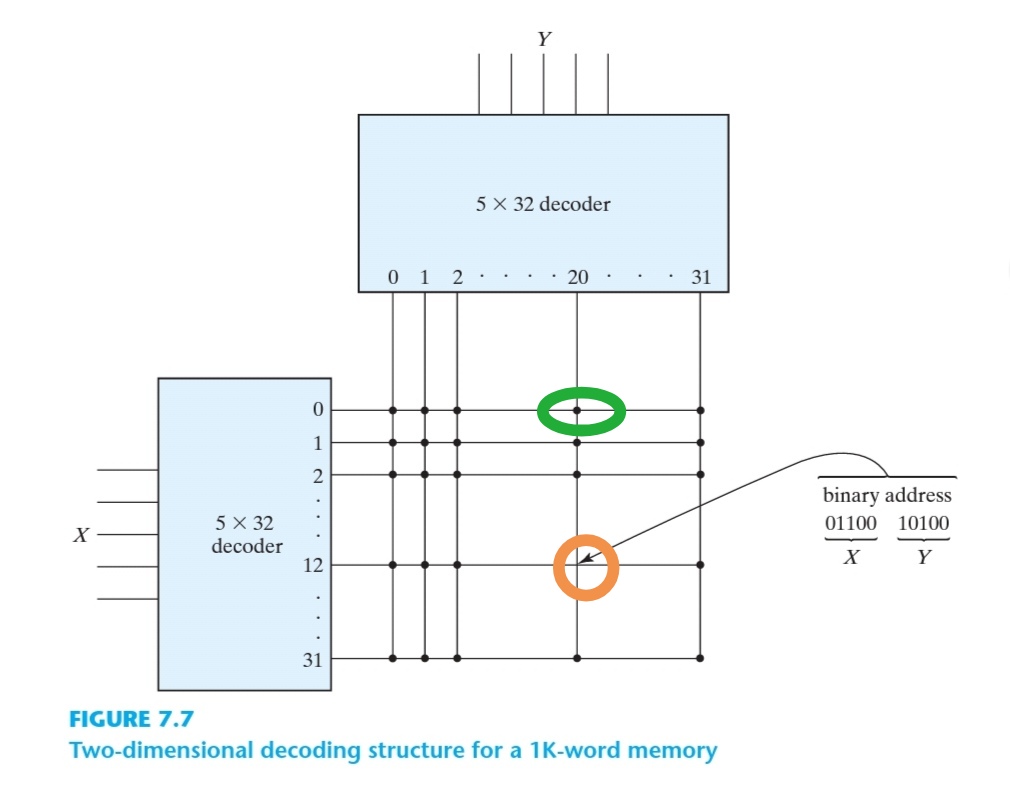Below is an illustration on how coincident decoding works in which the total number of gates used in the decoder can be reduced by employing two decoders in a two‐dimensional selection scheme:

If x-output 12 and y-output 20 is both logic one, then the intersection(colored orange) will be logic 1 right? But what about the others? For example, if x-output 0 and y-output 20 is logic 0 and 1 respectively, how will the interestion(colored green) will remain disabled(logic 0) and the orange colored intersection to be the only one active(logic 1)?
Why would the intersection of logic 1 and logic 0 results in logic 0?
I thought that the intersection would mean the logic 1 being shorted to logic 0 that's why the result will be grounded(logic 0),but I doubt this since this would mean that every disabled intersections of the RAM block will be shorted and that sounds bad to me....
